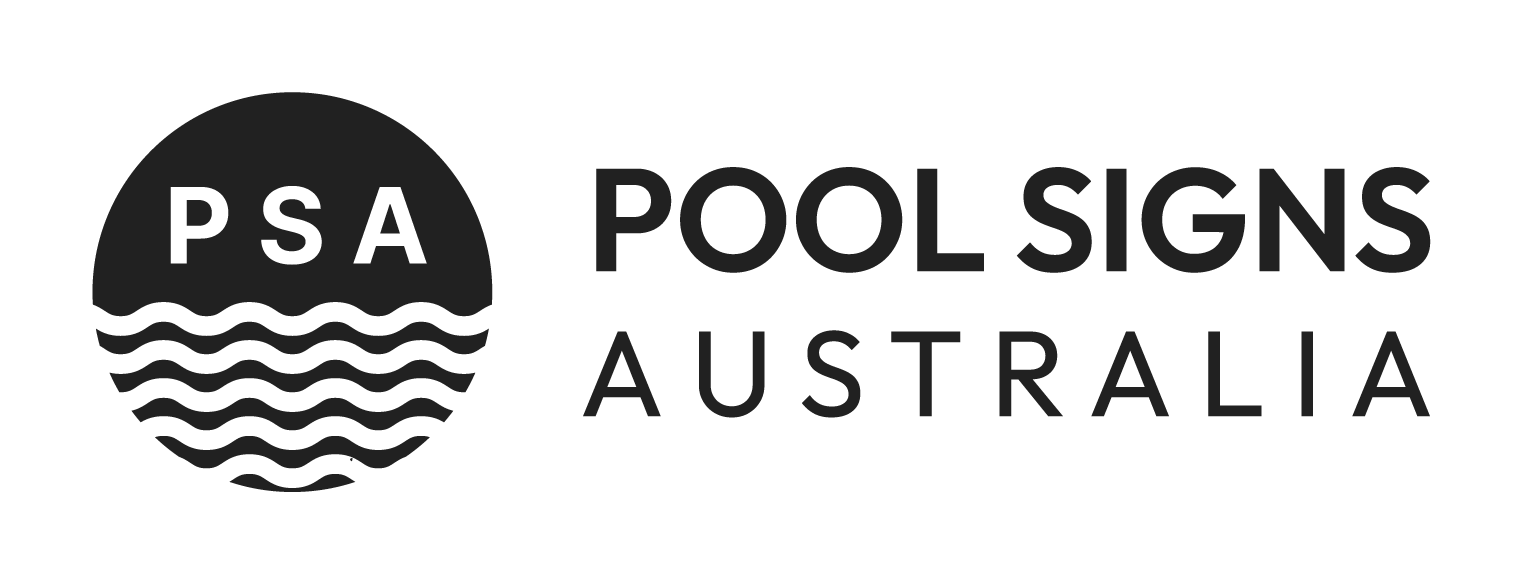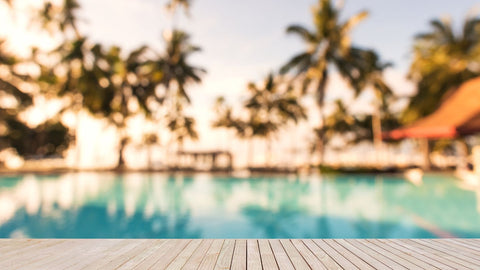If you own or manage a pool in Australia, or you’re responsible for safety in a workplace or community facility, CPR signage isn’t just “nice to have.” It’s a fast-reference lifesaver in an emergency and, in many cases, a legal requirement. This article breaks down what CPR signs are, how Australian guidelines shape their content, how state rules (with examples from Queensland and New South Wales) affect placement and size, and what to look for when buying and maintaining a sign.
What is a CPR sign?
A CPR (cardiopulmonary resuscitation) sign is a highly visible poster or panel that summarises the steps to begin life-saving CPR, typically using the DRSABCD action plan and simple diagrams. Across Australia, the content of these signs is grounded in the Australian Resuscitation Council’s (ARC) current resuscitation guidance; ANZCOR Guideline 8; which emphasises starting CPR when a person is unresponsive and not breathing normally, encouraging bystander CPR, and applying an AED (defibrillator) as soon as possible if available.
National guidance vs state rules
Australia doesn’t have a single national “pool sign” law; instead, states and territories set their own pool safety rules while broadly aligning CPR instructions with the ARC/ANZCOR guidance. That means the steps shown on a compliant sign should mirror the current ARC flowchart, but the size, placement, and exact wording you must display can vary by jurisdiction. Always check your local requirements; your council website or state regulator usually publishes them, and verify that your signage reflects the latest ANZCOR Guideline 8.
Queensland: clear, practical requirements
Queensland explicitly requires pool owners to display a CPR sign “prominently.” If you’re replacing a sign, the Government’s guidance says it must be attached to the pool’s safety barrier or displayed near the pool so anyone nearby can see it easily; be at least 300 mm × 300 mm; be durable and weatherproof; and include a prominent statement about what to do in an emergency (e.g., call Triple Zero (000), stay with the person, provide first aid).
Queensland Government
The Queensland Building and Construction Commission (QBCC) reinforces those points: the sign must show how to perform CPR, be attached to the fence or positioned conspicuously near the pool, be at least 300 mm × 300 mm, and be made of durable, weather-resistant material. Guidance also notes the sequence that CPR should start with 30 chest compressions followed by 2 breaths, reflecting contemporary ARC practice.
QBCC
Queensland’s pool barrier standard (QDC MP 3.4) sits alongside Australian Standards for pool barriers and is the broader framework pool owners work within; CPR signage is an explicit element of that safety ecosystem.
New South Wales: content spelled out in regulation
NSW takes a prescriptive approach in the Swimming Pools Regulation 2018. Clause 10 requires the warning notice to include three specific statements, “Young children should be actively supervised…”, “Pool gates must be kept closed at all times”, and “Keep articles, objects and structures clear of the pool fence at all times”, plus a simple resuscitation flowchart set out in accordance with ANZCOR Guideline 8 and consistent with other ARC guidelines, a statement that formal instruction in resuscitation is essential, and the publisher’s name and publication date on the sign.
The NSW regulation even defines “Cardiopulmonary Resuscitation Guideline” as ANZCOR Guideline 8, ensuring the sign content tracks the official ARC material.
Workplace and community settings
Outside pool areas, many organisations display CPR posters in gyms, offices, workshops, and community facilities. In occupational environments, emergency information signs (like first aid and safety equipment identifiers) generally follow AS 1319: Safety signs for the occupational environment for colours, symbols, and layout conventions, think green-and-white for emergency information. While AS 1319 is not a pool-sign law, it’s the baseline reference for compliant workplace safety signage design across Australia.
Jabac
What a good CPR sign should include
Whether you’re complying with Queensland, NSW, or another jurisdiction, look for these qualities:
Accurate, up-to-date CPR steps
Match ANZCOR Guideline 8 and show the DRSABCD approach clearly and simply. Where space allows, include AED prompts (“apply defibrillator as soon as available”). This ensures your sign supports best-practice care.
Your Site Name
Minimum size and visibility
Check your local minimums. In Queensland, 300 mm × 300 mm is the floor and the sign must be easy to see from the pool area. NSW requires specific wording plus the ARC flowchart, so choose a design that leaves ample room for both large text and a legible diagram.
Durable materials
Sun, chlorine, and weather will fade poor-quality prints quickly. Queensland guidance explicitly calls for durable, weatherproof construction; look for UV-stable inks, laminated or aluminium panels, and anti-fade finishes. If your sign becomes hard to read, replace it, your inspector will treat a faded or damaged sign as non-compliant.
Queensland Government
Emergency instruction statement
Many jurisdictions expect a prominent instruction like “Call Triple Zero (000), stay with the person, provide first aid.” It’s simple, but it shapes behaviour in the crucial first minutes.
Queensland Government
Publisher and date (NSW)
If you’re in NSW, ensure your sign includes the publisher’s name and publication date, as the regulation requires.
Placement tips that inspectors look for
Conspicuous location: Mount the sign on the pool fence/barrier or immediately adjacent to the pool so anyone in the area can read it without obstruction. Queensland explicitly specifies conspicuous placement; NSW expects a clear warning notice within the pool area.
Readable at a glance: Avoid cramped text. Choose a layout with a clear flowchart (ARC-style) and large headings. If your pool is large or has multiple zones, consider more than one sign to keep viewing distances short. (Queensland’s minimum size helps here.)
Mounting height and glare: Position to avoid blinding reflections and keep within a typical eye-level band so adults and older children can read it. (While height isn’t always prescribed, practicality and visibility drive compliance checks.)
Buying the right sign
When you purchase, confirm the sign:
- Cites ANZCOR Guideline 8 and shows the current flowchart steps (not an outdated sequence).
- Meets your state’s wording and format (e.g., NSW’s three “actively supervise/keep closed/keep clear” statements, publisher, and date).
- Meets size and durability requirements (e.g., minimum 300 mm × 300 mm and weatherproof for Queensland).
- If you also need workplace safety graphics (first-aid locations, AED markers, etc.), choose products laid out in line with AS 1319 conventions for consistency and clarity.
Maintenance and replacement
Inspect your CPR sign at the start of each swimming season and after harsh weather. Replace it if it’s faded, peeling, cracked, vandalised, or otherwise illegible. Queensland’s guidance is clear about durability and visibility; in practice, inspectors will fail a pool barrier inspection if the sign can’t be read or is missing, so preventative replacement is cheaper than a second inspection call-out.
The bottom line
CPR signs are small, inexpensive pieces of kit that punch well above their weight in an emergency. In Australia, their content should mirror the ARC’s ANZCOR Guideline 8, while legal specifics, like minimum size, exact wording, and visibility, come from your state or territory rules. In Queensland, that means at least 300 mm × 300 mm, weatherproof, conspicuous placement and an emergency action statement; in NSW, it means the three prescribed warning statements plus an ARC-aligned flowchart and the publisher/date on the sign. If you’re unsure, check your state regulator’s website and buy from a supplier who explicitly states compliance with ANZCOR Guideline 8 and your local laws.
Note: This article is general information. For hands-on skills, consider accredited first-aid/CPR training and always follow current guidance from the Australian Resuscitation Council.



